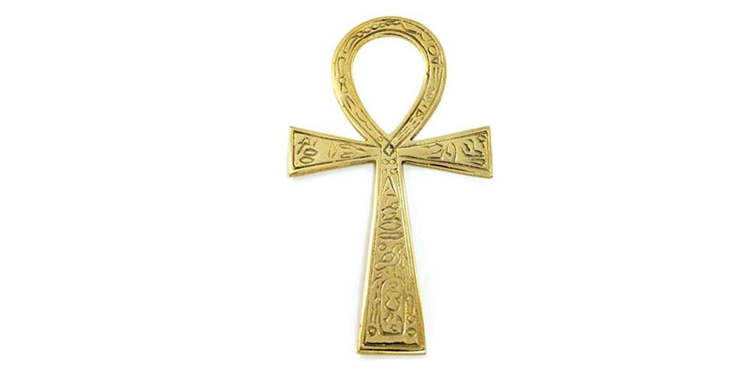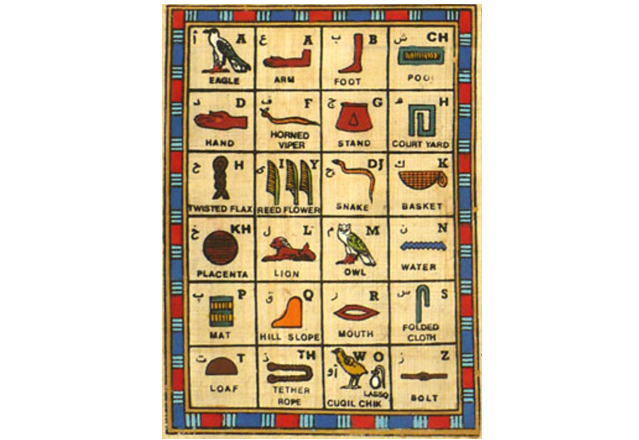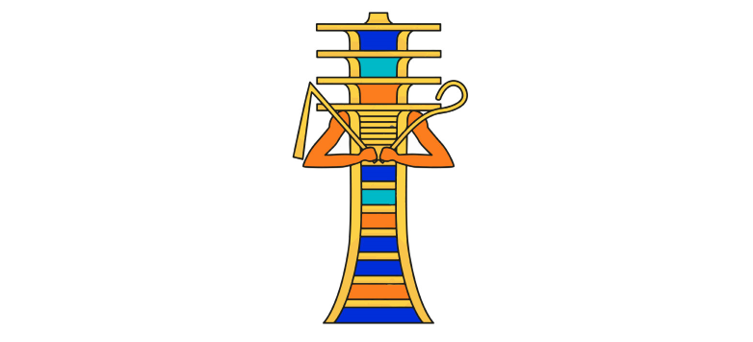These mysterious ancient symbols are often found on the ancient temples and monuments of Egypt or even in the form of tattoos.
But do you really know their implicit meanings and powers? Let's discover them together!
1) The eye of Horus

Also known as Udjat, Wadjet and Uto, this symbol represents the vigor of body and mind, the iron constitution. Also seen as the symbol of the Moon, the inhabitants of ancient Egypt lent the eye of Horus healing powers.
Vessels in the shape of the eye of Horus were also used as medical tools to measure the quantities of each component in the preparation of healing potions.
In the Egyptian myth of Osiris, when Horus and Set fought for the throne of Egypt, Set punctured Horus' left eye. Thoth replaced this eye using his magic, improving his abilities in the process, giving him enhanced powers of vision. Later, Horus sacrificed his eye to restore life to his father Osiris. It is for this reason that the Egyptian eye is also seen as the symbol of sacrifice for the common good.
The eye of Providence (the Masonic eye that sees everything, the eye of the Illuminati pyramid) present on American banknotes is derived from the eye of Horus.
2) The eye of Ra

There are various myths concerning the origin of the eye of Ra's symbol. It is commonly accepted by experts in Egyptian civilization that the right eye of Horus gradually became the eye of Ra over time. The two eyes ultimately represent virtually the same concepts.
3) The Egyptian crowns

The Pschent was the double crown of Egypt composed of the red crown Deshret (or Decheret) and the white crown Hedjet respectively representing Lower Egypt and Upper Egypt. Together they represented the unity of Egypt's two provinces and the pharaoh's control over them.

The Khepresh is the pharaoh's war crown that he wore during battles against Egypt's enemies.
The Nemes is the pharaoh's richly decorated solid gold crown. It was used only during the most official ceremonies of the kingdom. The Nemes is always accompanied by the pharaonic false beard. This latter beard showed the divine origin of the pharaoh because it is not subject to gravity and remains straight even when the pharaoh raises his head.
The Atef is the crown imitating that of Osiris, the perfect-pharaoh god. This crown was intended for ceremonies related to the coronation of new pharaohs.
4) The ankh, the symbol of life

The "ankh" (or "crux ansata") is the most widely used of the ancient Egyptian symbols. It represents vitality and eternal life.
It is also used as the symbol of marital union. In particular, that of Osiris and Isis, which was supposed to bring prosperity to Egypt as the two gods of the Nile flood (an element making farmlands of Egypt fertile). This explains why the ankh is also called "the Key of the Nile".
In addition to being used as a symbol of the purifying and life-giving power of water and of clairvoyance (the ability to see "beyond"), the ankh was regarded as "the key to eternity" and as "the key to the underworld".
Indeed, many ankhs were drawn on temple walls because the ancient Egyptians believed that this symbol offered divine protection.
Through time, ankh crosses have been very popular because they have very often been compared to their counterparts from Christianity: the Christian crosses, the most emblematic symbols of the Christian religion.
5) Ouroboros

The Ouroboros (or Uroboros, the symbol of the serpent god Apep who bites his tail) represents the Sun's journey in the sky because it represented that of Aten, the solar disk god illuminating the Universe by his long walk around the cosmos.
In addition, Ouroboros represented rebirth, the recreation of life and infinity.
In the Egyptian Book of the Dead, "the giant snake that eats itself" is strongly linked to Apep, the snake god who ate himself every night and was reborn each morning from self-digestion, giving him strength for a new day.
6) Scarab

The Egyptian scarab is one of the symbols at the center of the beliefs of ancient Egypt. The scarab, also known as the mud scarab, represents the Sun star, the redemption of the soul and the immutability of the cycle.
When the ancient Egyptians saw the scarabs rolling balls of dirt (their main source of food), they believed that the scarabs recreated small Suns, thus recreating the scene of the creation of the Universe by the falcon-headed god Amun-Ra.
8) Hieroglyph

Hieroglyphics were the traditional form of writing that we find nowadays on walls and Egyptian cartouches in ancient monuments of Egypt.
With the fall of ancient Egyptian culture and its polytheistic religion, the meaning of hieroglyphics was gradually lost. Indeed, hieroglyphics are very different from nowadays alphabets and their reading required a lot of training whose resources needed have been lost for centuries.
If the hieroglyphics are so complicated to decipher it is because each hieroglyphic which exist doesn't represent necessarily a letter of an alphabet. Indeed, there are four distinct types of hieroglyphics:
- Hieroglyphics which represent a letter of the alphabet
- Hieroglyphics which represent a complete word
- Hieroglyphics which represent a sound
- Hieroglyphics which give the gender or the number of another hieroglyphics
For that reason, after being lost for about two millennia, the meaning of hieroglyphics has only been found again in 1822 with the intensive research of the French Jean-François Champollion.
7) Djed pillar

The Djed pillar is the symbol that represents stability in ancient Egyptian culture.
The Egyptians believed that the djed pillar was the combination of the four great pillars that supported the four corners of the sky so that it would not fall (the Egyptians hadn't yet discovered that the Earth was spherical).
This symbol was first known as the symbol of Ptah, the god of creation. However, the cult of Osiris gradually appropriated it and described the Djed pillar as the spinal column of the god Osiris. This is where its other name "the backbone of Osiris" comes from.
8) Tiet, the knot of Isis

The Tiet/Tyet, also known as the "Knot of Isis" and the "Blood of Isis," is an Egyptian symbol whose appearance and meaning closely resembles that of the ankh, the symbol of life.
It also represents the magical powers of the goddess Isis that enable her to grow wings. The wings of Isis are important in Egyptian myths, because it is with these magical wings that Isis gives life to the god Horus who will overthrow the god of evil Set to give back its prosperity to the Egyptian world.
9) Ba

In the shape of a bird (most often a hawk) with a human head, the Ba symbol was represented as going out or entering the Egyptian sarcophagus of a dead person in Egyptian art.
The word "Ba" itself meant "soul" in ancient Egyptian. Indeed, Ba is the part of the soul that contains what makes a person unique (his character, feelings and opinions).
10) Maat feather

The goddess Maat represented justice in Egyptian culture. Maat's feather could thus be seen as the guarantee of justice.
Indeed, ancient Egyptians believed that when a person died, his heart was weighed against a Maat's feather in the Hall of Two Truths when his soul entered the Duat (the Underworld of Egyptian mythology).
If the weight of his heart was equal to or lighter than the feather, it meant that he was a good person, and he was allowed to enter Aaru (the paradise ruled by Osiris).
Otherwise, his heart would be eaten by Ammit, the soul-eating goddess, and his soul would be condemned to remain in Hell for all eternity.
11) Uræus the cobra

Derived from the word "laret" which means "the resurrected one", uræus represents a cobra rising in all its splendor.
The symbol of uræus represents the link between the gods and the pharaohs, thus distinguished from other mortals by the symbol of uræus adorning the various crowns of pharaohs.
12) The sceptre and the scourge - Heka and Nekhakha

The sceptre "Heka" considered as the pharaoh's shepherd's staff was the symbol of his power of control over the people of Egypt but also of his mission of guiding these people.
In the same way, the scourge "Nekhakha" was the depositary of the authoritarian power of the pharaoh (contrary to the Was sceptre). However, according to the famous Egyptologist Toby Wilkinson, the scourge, unlike the shepherd's staff, was more a symbol of the pharaoh's power to punish the people than of his mission to guide them.
